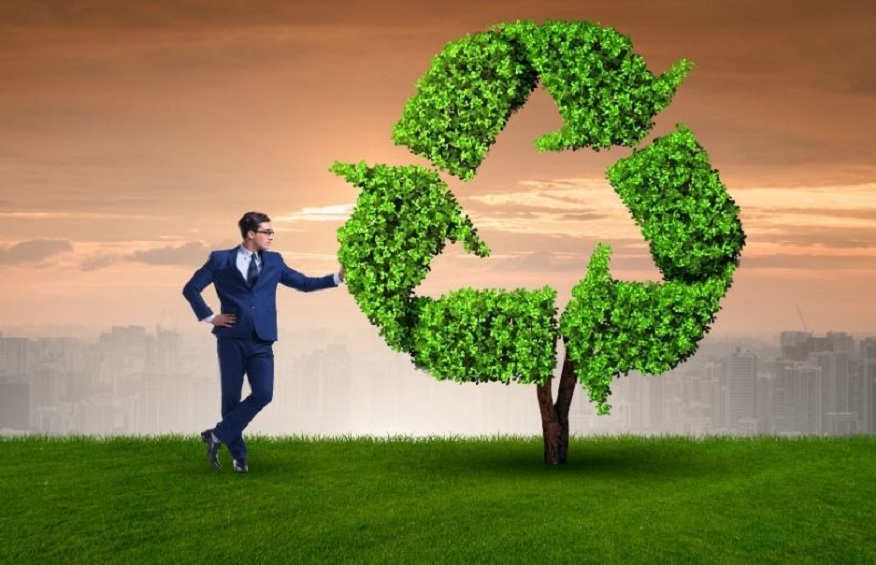Guide on how to manage your eco business sufficiently

In the world we live in now, businesses have no choice but to take care of the environment.
Customers want products that are made from resources that can be used for a long time, and workers want to work for companies that have strong morals.
Even investors are getting on board, and they are filling their investment portfolios with businesses that follow environmental, social, and governance standards.
The environment is a controversial topic, and many things that are good for the environment also save businesses money.
When there are so many reasons to act in a sustainable way, you may not know where to start. Use this guide to learn how to manage your eco business sufficiently.
How to manage your eco business sufficiently
To manage business built from the ground up with sustainability in mind, it is important to use business practices that are good for the environment in every step.
Think about how each part and function of your business can help the environment in a positive way and reduce the negative effects it has on the world. There are six things that need to be thought about.
Make sustainability your mission
Incorporate a commitment to sustainable business practices into the core of your organization’s goal, whether you’re just starting out or already have a well-known name in your industry.
If being environmentally conscious isn’t already a part of your company’s mission statement, it’s a smart idea to draft a succinct proclamation that summarizes your organization’s sustainability objectives.
Certifications for environmentally responsible businesses frequently demand that businesses have an overarching purpose statement that governs their many sustainability initiatives.
Your team’s core principles help them focus their efforts around a single purpose while holding everyone accountable for their individual contributions.
They condense and make clear your priorities, as well as formalize the commitment that your organization has made to the environment.
Collaborate with the people who are in charge of making decisions on your green business practices as you draft the mission statement for your company.
Initially, you should explain why it is critical for your organization to practice sustainable business.
You should write down your particular goals, a list of priorities, and the concrete steps you will take to achieve those goals.
Lastly, you should outline a plan for the future and how you intend to evaluate your level of achievement.
Store and ship your products sustainably
Make sure you use environmental sustainability methods that are good for the environment when you deal with your products.
Your goods should be stored in a building that is aware of how much energy and water it uses. They should also be packed in shipping containers that can be used more than once.
If you can, put solar panels on the roof of your storage facility or work with a third party that gets its power from a sustainable source. When you need to get rid of things that haven’t sold, you might want to think about giving them away or recycling them.
Go green wherever possible
If you run a business that depends on providing a service or going to different places for work, you will have to put in more work if you want it to be successful in the long run.
On every construction site, for example, a construction company has to use methods that are good for the environment.
This could mean using construction tools that use less fuel and cutting down on or getting rid of any wasteful water use.
It is important to have an effective waste management system in place so that your construction site doesn’t pollute the area around it.
If you manage construction waste well, you may be able to recycle and reuse more materials, which will save you money in the long run.
Consider your back office
A lot of companies are working hard to make their products and services more environmentally friendly.
Even if your clients don’t spend much time in your office, it’s still important to make it more eco-friendly.
Your office should follow all of the same rules that say how to make sustainable products and how to build buildings that are good for the environment.
Your workplace should try to use less energy and make less trash. This goal might be able to be reached with the help of the staff and the implementation of certain policies.
For example, it’s a good idea to start by putting recycling bins in your building as a first step. However, this won’t help you if you don’t teach your team what materials can and cannot be recycled and remind them to use the bins.
Try going paperless or at least reducing how much your office prints on paper. Use computers and other office equipment that uses less energy, and make sure all the machines are turned off and the lights are turned off before your staff leaves for the day.
Give Back
Donating to good causes can be an important part of a plan for long-term sustainability.
For example, if your business gives away unused goods to a local charity, you keep those goods from going to a landfill.
As part of your mission to promote sustainability, you may also want to give money or time to charities or find ways for groups to help out.
There’s a chance that your company will work with environmental groups that don’t charge for their services.
It could also be a part of how you plan to run your business. For example, a lot of businesses donate a portion of the money they make from selling certain products to a charity, which is usually mentioned on the packaging of those products.
Giving to charity can also help make up for the bad effects of some economic activities that are hard to keep going in any other way.
For example, if a business needs to release carbon emissions in order to ship things all over the world, you might want to think about buying carbon offsets or giving money to groups that plant trees so that you can become carbon neutral.
Reduce Waste
The most environmentally friendly way to deal with trash is to make less of it. If you make less trash, you can help protect the environment and cut down on the amount of greenhouse gases you put into the air.
Consider doing things like getting rid of all paper or reducing the amount of paper your business uses.
It’s also a good idea to invest in machines and materials that last longer so they don’t end up in landfills as quickly.
If you work in manufacturing or construction, you should follow the standard procedures for your industry to cut down on material waste.
Improve energy efficiency
Several businesses have made it one of their top priorities to use less energy. Businesses can cut their overall operating costs by using less electricity and fossil fuels. This can be done by putting in place energy initiatives. They might also be able to help the planet.
As a result of all of these initiatives, your energy costs, your reliance on fossil fuels and the amount of carbon dioxide you put into the air will all go down by a large amount.
Conserve Water
Water conservation, like energy efficiency, can save your business money on its utility bills and help it become more environmentally responsible at the same time.
Along with the direct benefits to the environment, using less water also saves the electricity needed to heat water.
Putting in low-flow faucets, toilets, and urinals in the bathrooms and kitchens of commercial buildings can help these buildings save water.
People can also save water with no-touch sensors because they won’t leave the taps running by accident when they aren’t using them.
One way to save water is to use plant types that don’t need a lot of watering in your landscaping.
You could make your sprinkler system work better by setting it to turn off when it looks like it might rain.
In addition to using less water, you might also want to look into ways to handle your wastewater that are better for the environment.
No matter if you work in a factory or an office building, the water you use needs to be treated so that it has less of an impact on the environment.
Formalize your sustainability plan
In the event that you have not yet incorporated sustainability into the mission statement of your organization, you will need to devise a strategy for the introduction of new environmentally friendly procedures.
Your formal plan will identify priorities and specify time-bound improvement goals.
You may, for instance, set a goal to cut energy use by 25% over the course of the next three years or to convert your entire fleet to electric vehicles over the course of the following five years.
Your plan may also include certain actions to be taken in order to accomplish sustainability targets and identify those who will be responsible for taking those actions.
Including accountability into the plan you have for sustainability is absolutely necessary. Your team will be able to implement the project in a timely manner if they do it this way.









